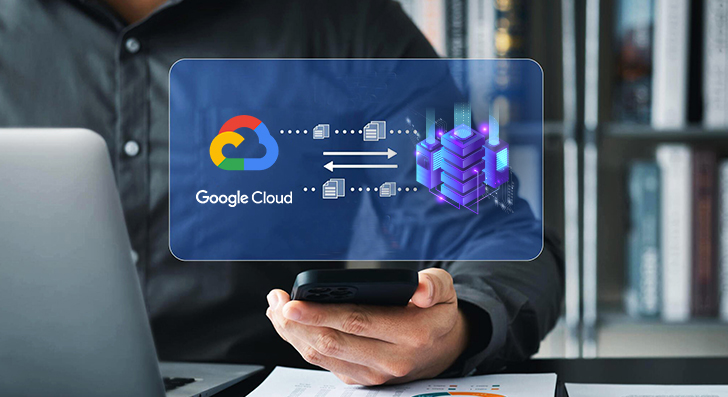Cloud migration initiatives are scaling across the globe at a rapid pace. Enterprises of all sizes and verticals are actively migrating their data and applications to the cloud by devising the fastest and most reliable migration strategies. But what are the key reasons behind this rapid adoption of the cloud ecosystem? The answer is simple: cloud platforms minimize technology adoption barriers by offering a flexible infrastructure that can be utilized on a pay-as-per-resource consumption model. By leveraging sophisticated cloud security mechanisms like encryption and identity and access management (IAM), enterprise applications and data can be protected effectively while maintaining compliance. However, despite the evident benefits, many tech behemoths still have several questions that make them skeptical toward cloud migration, including:
- What workloads should be migrated to the cloud?
- Which cloud platform to select?
- Where to begin from?
Since data is the essence of digital transformation, enterprise leaders should prioritize moving their data assets stored in the legacy data center to the cloud. By doing so, data assets can be protected from varying security threats while maintaining compliance in the long term. As per a survey, 73% of tech respondents stated that migrating data centers to the cloud provides greater protection for sensitive data. Besides, data asset migration helps enterprises minimize huge capital expenses related to legacy data center maintenance, resulting in improved cost-efficiency.
Data Center Migration to Google Cloud – Bolstering Data Management and Accessibility
Though there are many cloud vendors, Google Cloud remains the preferred choice of platform for data center migration. This is because of its intuitive global network infrastructure. This infrastructure is equipped with intelligent data traffic management functionalities like load balancing and content delivery networks (CDNs). Hence, when businesses shift their data centers to Google Cloud, they can effectively host data assets on various backend servers and ensure greater availability.
These CDNs help in caching and storing data assets in the edge locations (virtual data hubs). When a user requests data, the CDNs instantly retrieve it from the nearest edge location, rather than fetching it from the original data center. This helps organizations maintain a low-latency data center while reducing data transfer and bandwidth costs.
Other key aspects that make Google Cloud optimal for data center migration are:
- Serverless Data Analytics – Shifting data centers to Google Cloud enables analysts and stakeholders to perform large-scale analysis on accumulated datasets using BigQuery. This built-in serverless analytics engine is well-known for rapid query execution and data processing, enabling analysts to gain valuable insights from extensive datasets and make strategic decisions. BigQuery also facilitates the development and integration of artificial intelligence (AI) and machine learning (ML) models within cloud data centers. This helps in streamlining the flow of data ingestion, processing, and analysis.
- Identity and Access Management – With Google Cloud migration, data assets can be secured with encryption keys. The identity and access management system in Google Cloud offers encryption keys created with cryptographic protocols like transport layer security (TLS) and secure sockets layer (SSL). By implementing encryption keys, least privilege access can be provided to assets in the cloud data center, thus eliminating the risk of unauthorized access and data theft.
- Data Backup – By hosting data centers on Google Cloud, automated backup and disaster recovery options can be implemented effortlessly. The automated backup functionality schedules regular and consistent data asset backups without human intervention. This minimizes the need for manual data backup and the risk of data loss due to human errors.
Legacy to Cloud Migration for Business Efficiency
4 Best Practices for Successful Data Center Migration to Google Cloud
1. Analysis and Transformation
A detailed format analysis of all data assets within a legacy data center footprint is crucial before stepping into the migration process. There are possibilities that some datasets in the legacy systems might be stored in outdated formats like ecological metadata language (EML) and personal storage table (PST). Such data formats are not compatible with the Google Cloud ecosystem. Hence, through detailed analysis, identifying datasets with outdated formats becomes easier.
Consequently, the outdated datasets can be changed into JSON (Google Cloud’s native data format) using data transformation tools. These tools help in performing data mapping and cleansing activities, such as eliminating duplicates, correcting errors, and standardizing data values and fields before converting to JSON. By performing end-to-end data transformation process for cleaning and standardization before migration, the risk of data corruption and non-compliance can be reduced.
2. Migration Strategy Selection
Ever wondered what it would be like for sailors if there was no navigational plan? It would be the same for organizations that opted for data center migration without determining the appropriate strategy. Employing the right migration strategy is essential for improving cloud data centers’ operational continuity and performance. In the context of legacy data center migration to Google Cloud, following a colocation transition strategy is advisable. The colocation strategy helps in migrating cleansed and transformed data assets and resources to Google Cloud in a phased and controlled approach, thereby minimizing downtime.
3. Execution
For a failsafe migration, businesses should consider hiring experts from a reputable Google cloud computing services provider. Initially, these experts migrate a small batch of formatted data assets and workloads to Google Cloud using the colocation migration strategy and observe the integrity and performance (time taken to retrieve/transfer) of datasets. Pilot testing observance is crucial to ensure that the previous data transformation and formatting processes didn’t corrupt data quality. Moreover, performance analysis gives insights into the required computation power and network bandwidth for hosting data assets on Google Cloud. This strategic approach helps experts devise a tailored roadmap for full-scale migration and eliminate potential pitfalls.
However, during full-scale migration of data workloads to Google Cloud, experts use automated migration tools. By inputting custom rules and policies, these tools enable them to shift desired data assets and resources from a legacy data center to Google Cloud infrastructure instantly without any inconsistencies. Another key aspect that experts focus on during migration is stakeholder buy-in. By involving key stakeholders and business users during migration, experts can acquire real-time feedback and make iterative improvements to the migration strategy. This collaborative approach facilitates better user adoption and change management while fulfilling business objectives.
4. Monitoring and Optimization
After full-scale Google Cloud migration, tech leaders can leverage the highly intuitive resource monitoring tool to effectively track the cloud-hosted data center in real-time. These tools help them understand the resource consumption level of data assets and optimize computing power accordingly. For instance, when the traffic level of a data workload increases, leaders can easily connect preemptible virtual machines (VMs) from the Google Cloud compute engine and expand the workload’s instance size or configuration to ensure greater accessibility. Similarly, leaders can disconnect these VMs during low-traffic scenarios, thereby enabling flexible optimization of cloud resources. Such flexibility results in better cloud cost optimization.
Google Cloud Experts – Ensuring Seamless and Successful Data Center Migration
Large-scale projects like data center migration to Google Cloud can be time-consuming for internal tech teams. However, by collaborating with a Google Cloud services provider, the chances of ensuring a rapid and hassle-free Google Cloud data center migration are higher. Through strategic and more manageable steps like in-depth assessment, planning, and testing before transition, dedicated migration experts can reduce the complexity of data center migration projects.
Even after migration, experts can be of great help in the phases like user training and adoption. They can train internal teams and leaders on building intelligent data analysis models by leveraging artificial intelligence and machine learning. These models help in obtaining continuous data-driven insights related to customer behavior or market trends and optimize their services accordingly. Effective training helps business users quickly adapt to the Google Cloud ecosystem, minimizing the learning curve and potential productivity losses.






